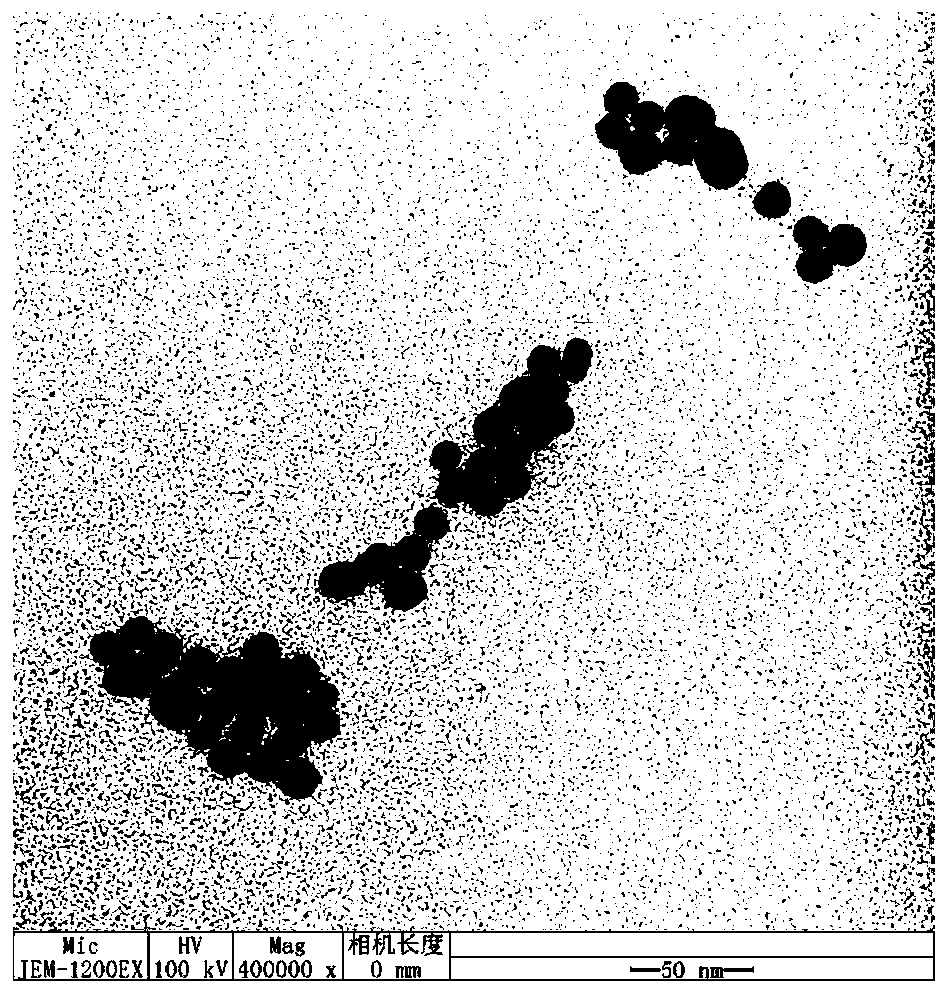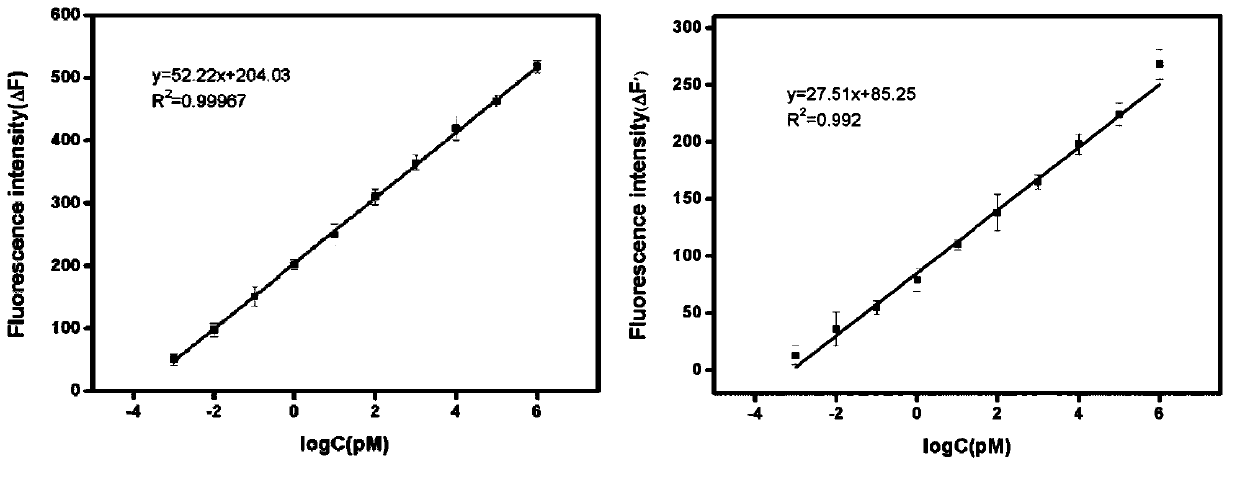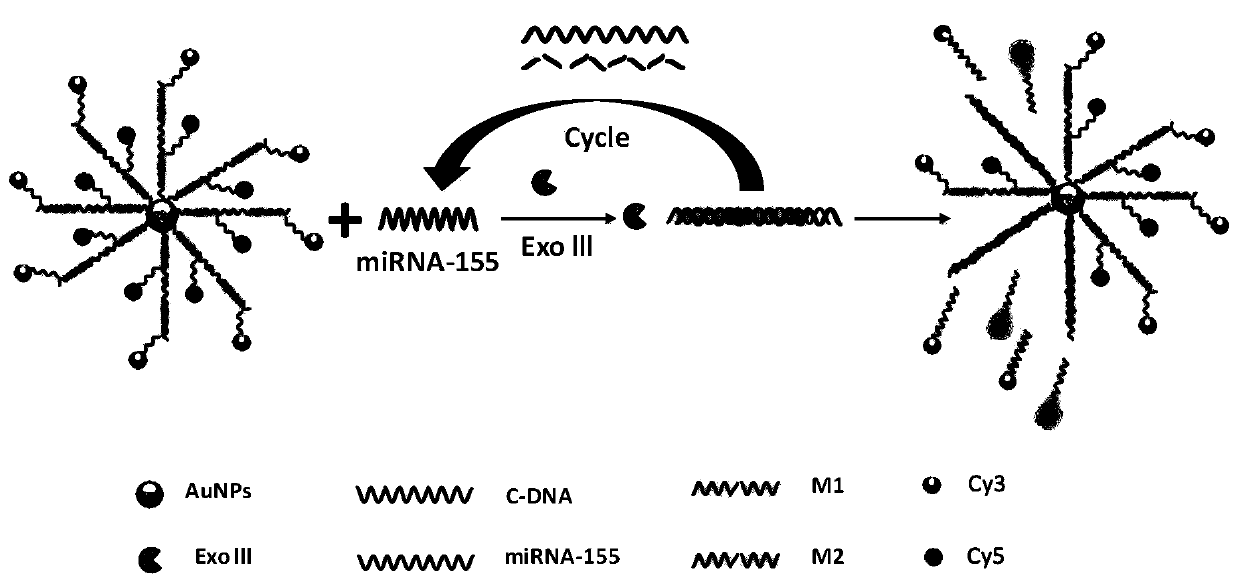Fluorescent biosensor based on nucleic acid recognition induction and application thereof
A biosensor, nucleic acid technology, applied in fluorescent biosensors and application fields, can solve the problems of low accuracy, low sensitivity, and high cost, and achieve the effects of improving accuracy, enhancing sensitivity, and enhancing strength
- Summary
- Abstract
- Description
- Claims
- Application Information
AI Technical Summary
Problems solved by technology
Method used
Image
Examples
Embodiment 1
[0040] Preparation of fluorescent probes based on gold nanoparticles (based on nucleic acid recognition-induced fluorescent biosensors):
[0041] Take 1mL gold nano solution (1mM, the appearance of gold nano is as follows figure 2 shown) in a centrifuge tube, and 20 μL of thiol-modified recognition sequence cDNA at a concentration of 100 μM was added thereto, and then the resulting mixed solution was reacted with gentle stirring at 37° C. for 12 h. In order to reduce non-specific adsorption, the cDNA-gold nanocomposites were dispersed in 200 μL 0.1 MPBS (pH 7.4) containing 3% BSA, 0.1 M NaCl and 0.02% Tween-20, kept at 37 °C for 1 h, and then washed with PBS buffer (0.1 M, pH 7.4) was washed 3 times, and redispersed in 200 μL of PBS buffer (0.1 M, pH 7.4). Next, 50 μL of two oligonucleotides (signaling probes) M1 and M2 (100 μM each) were added to the above solution, and reacted at 37° C. for 2 h. After washing three times with PBS buffer (0.1 M, pH 7.4), the resulting comp...
PUM
 Login to View More
Login to View More Abstract
Description
Claims
Application Information
 Login to View More
Login to View More - R&D
- Intellectual Property
- Life Sciences
- Materials
- Tech Scout
- Unparalleled Data Quality
- Higher Quality Content
- 60% Fewer Hallucinations
Browse by: Latest US Patents, China's latest patents, Technical Efficacy Thesaurus, Application Domain, Technology Topic, Popular Technical Reports.
© 2025 PatSnap. All rights reserved.Legal|Privacy policy|Modern Slavery Act Transparency Statement|Sitemap|About US| Contact US: help@patsnap.com



